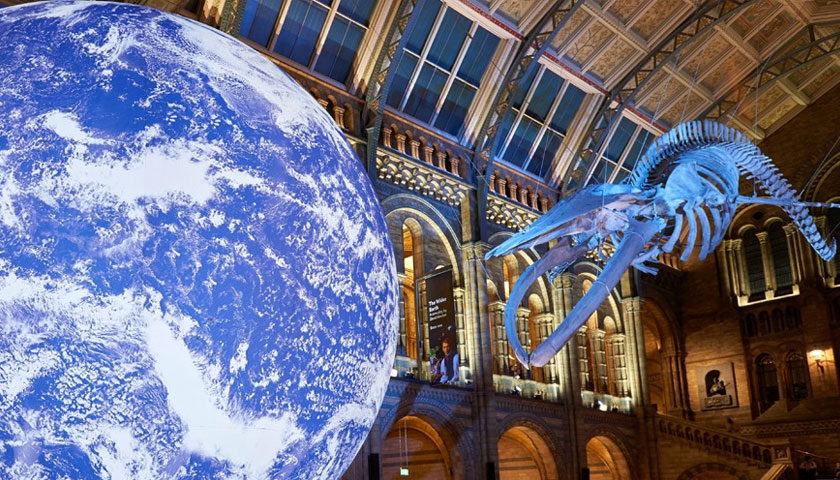The Natural History Museum has announced it has set a science-based carbon reduction target, developed in line with the scale of reductions required to keep global warming below a 1.5°C rise from pre-industrial levels.
- Science-based carbon reduction target will drive the Museum towards net zero emissions by 2035 as part of its Sustainable by Nature plan
- The first Museum in the world to set a science-based target in line with the Paris Climate Agreement
- Target represents a 60% reduction in carbon emissions by 2031
The first Museum in the world to set a science-based target, this represents a 60% reduction in the Museum’s carbon emissions by 2031 compared to 2015. The target is part of the Museum’s Sustainable by Nature plan and comes on the back of its earlier declaration of a planetary emergency, in recognition of humanity’s failure to combat our destructive impact on the planet’s survival systems.
Wayne Hitchings, Head of Sustainability said, ‘We’ve set this target in line with the Paris Climate Agreement’s goal in limiting global warming to no more than 1.5°C. As an evidence-based research institute with 300 scientists and the first Museum to set a target like this, we are leading the way in creating a world where both people and the planet thrive. From the energy we consume, to the way we procure goods and services, we are going further to create a resilient and sustainable organisation which will reach net zero carbon emissions by 2035.’
Following the context-based methodology developed by the Center for Sustainable Organizations, the Museum’s carbon emissions take into account factors including visitors and staff present on site and will be revisited on an annual basis to ensure the emissions reduction pathway is on course.
The Museum has already taken action by improving the insulation of its buildings, ensuring none of its waste goes to landfill and changing thousands of lights to LED. Next year it will update the energy centre which powers, heats and cools the Museum including introducing an air-source heat pump and solar panels, and will further decarbonise the heat supply in future. All new buildings and developments will have net zero carbon targets, including both the Museum’s new science and digitisation centre at Harwell Campus in Oxfordshire and the Urban Nature Project which will see the five-acre site in South Kensington transformed into a welcoming, accessible and biologically diverse green space in the heart of London.
A target is defined as science-based if it is developed in line with the scale of reductions required to keep global warming below a 1.5C rise from pre-industrial levels. The announcement comes during the COP26 meeting in Glasgow. The Museum has a range of engagement activity in Glasgow, London and online to coincide with COP26. The Museum is collaborating with The New York Times Climate Hub, a physical and virtual space where influential leaders and thinkers join forces with the wider community to debate, discuss and discover actionable climate strategies. The Museum is also partnering with its Ambassador David de Rothschild and his organisation Voice for Nature to run an event space within The New York Times Climate Hub giving visitors another opportunity to connect with the Museum’s solutions-focused science and a stellar line-up of activists, explorers, artists and business leaders.
The news section of the Museum’s website will host a live blog, reporting on the key developments from COP26 as they happen with additional deep dives into some of the big issues.
Back in London, visitors can see the free display, Our Broken Planet: How We Got Here and Ways to Fix It. Through over 40 objects chosen by Museum scientists, this free display explores how humans have transformed the natural world, the consequences of our actions and examines some of the solutions that could help mend our broken planet. It explores themes such as the food we eat, the products we use and the energy we consume. Underpinned by the Museum’s scientific research, it’s also deeply rooted in the possibility of addressing our relationship with the natural world.



